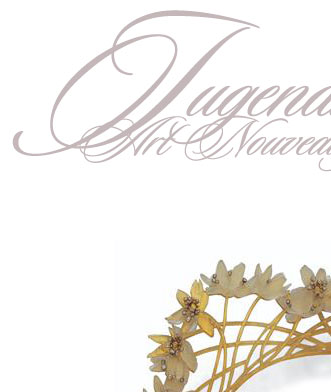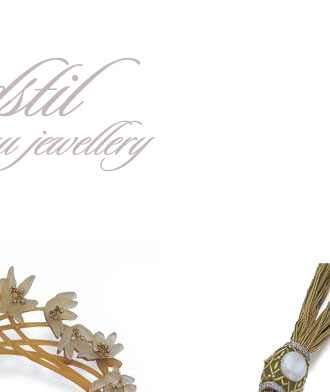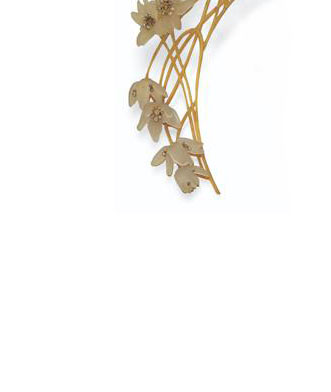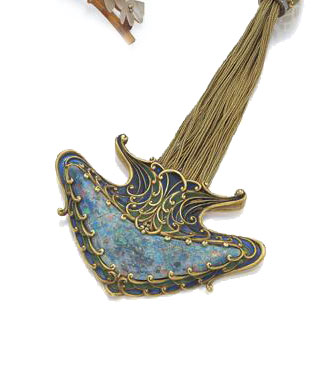



 |
 |
 |
 |
Jugendstil - Art Nouveau
- JUGENSTIL TIARA - UNUSUAL PATE DE VERRE, HORN AND DIAMOND DIADEME, RENE LALIQUE, CIRCA 1900
Designed as a spray of fritillaria, the stems in horn, the flowerheads in pâte de verre with cushion-shaped diamond pistils,signed Lalique, central diamonds in flowerheads deficient, horn and pâte de verre imperfect.
René Lalique is the undisputed genius of Art Nouveau jewellery, a man of great talent and versatility who succeeded in transforming jewels from mere forms of ornaments into great works of art. Since boyhood, Lalique showed great interest in drawing, designing and in the study of nature. Throughout the early 1880s, he honed his design skills working for Vever, Cartier and Boucheron. In 1885 Lalique became independent but it was not until 1895 that he first publicly exhibited under his own name at the Salon de la Société des Artistes Français, from which he obtained remarkable success. René Lalique excelled in the art of plique-à-jour enamel and from the late 1890s he began to incorporate moulded glass motifs in his creations. His greatest success came after the Paris Exposition Universelle in 1900 with many commissions coming from around the world. After 1910, disillusioned by the large number of low-quality imitations that his jewels had prompted, he devoted himself entirely to glassmaking.
- ENAMEL, OPAL, PEARL AND DIAMOND NECKLACE, MARCUS & CO, EARLY 20TH CENTURY
The Art Nouveau pendant designed as a stylized arrowhead applied with green and blue plique-à-jour enamel and decorated with a fancy shaped opal, on a gold necklace further decorated with a sliding cylindrical motif set with green enamel, a button pearl and circular-cut diamonds,signed Marcus & Co, enamel slightly damaged and opal cracked.
Marcus and Co. was established in 1892 when William Marcus was joined by his father Herman, and his brother, George Elder Marcus. By this time, the family already had a long career in the jewellery business. Marcus & Co. had shops at 857 Broadway as well as at the corner of 45th Street and Fifth Avenue, from which the firm established itself as a forerunner in the Art Nouveau style. During the 1920’s Marcus & Co. produced fine Art Deco jewels and opened branches in London, Paris and Palm Beach.
The Art Nouveau movement was undoubtedly one of jewellery’s most distinctive trends. This April Sotheby’s New York will offer a unique collection of more than 40 jewels from this period. In a direct reaction against the mass-produced jewellery of the latter 19th century, Art Nouveau jewels espoused the principles of nuance, illusion and mystery, eschewing the obvious. They had much in common with the Symbolist movement that had dominated painting and literature in France in the preceding decades
.Although nature was the dominant theme, designers rejected the literal rendering of flowers, leaves and birds, choosing to interpret or evoke these themes in an individual and highly stylized way. Materials were chosen for how well they served the overall design, rather than for their intrinsic value. Colours exploded in a variety of enamelling techniques sometimes combined with semi-precious stones or glass, and diamonds were often relegated to borders or accents. Most characteristic of the time is the use of plique-à-jour enamel, an open-backed style resembling stained glass, perfect for rendering such delicate things as the wings of a dragonfly.Art Nouveau came into vogue at the beginning of a new century. It brought with it a new sense of energy and vitality and left a legacy of creativity, beauty and fantasy.
source:sothebys next
***
Back